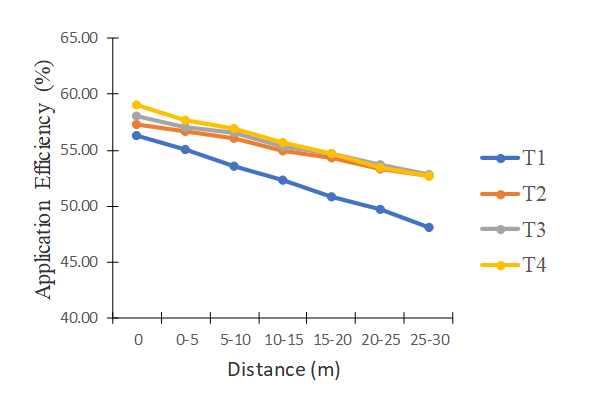Effect of Different Design Parameters of Furrow on Irrigation Efficiencies
Keywords:
Furrow, Irrigation, Efficiencies, Design ParametersAbstract
This study aims to evaluate the effect of different furrow design parameters on irrigation efficiencies to develop optimized guidelines for sustainable water management in agriculture. The present study was conducted to study the effect of different furrow irrigation designs on irrigation efficiencies and growth parameters of the okra crop. The experiment was carried out at the experimental field of the Department of Land and Water Management, Faculty of Agricultural Engineering and Technology, Sindh Agriculture University, Tandojam. There were four treatments and three replications. Bed widths were considered as treatments; T1 =0 .5m, T2 =0.6m, T3 =0.7m and T4 =0.8 m. The furrow length was kept at 30 m in each treatment. The height of each ridge was set to 0.5 m, and the overall plot area was 399 m2. Soil samples were collected at the soil depths of 0–10, 10-20, 20-30, 30-40, and 40–50 cm from the field pre- and post-experiment, to determine density, texture, and soil moisture content. The soil samples were analyzed in the laboratory of the Department of Land and Water Management. The field trial was continued for 28 days with an irrigation interval of 7 days. After 24 hours of water application, the data was collected. The trend of the wetting pattern of the moisture was the same under T1, T2, T3, and T4, respectively. The maximum moisture content was found at the head of the furrow. The moisture content decreased at the lower side due to the slope of the soil. In this study, the application efficiency is good to better under all the treatments of furrow design. The application efficiency, storage efficiency, and distribution uniformity increased was good under T4 as the width of the furrow increased, but these decreased as the length of the furrow increased. The yield of the crop increased under T3 and T4 as compared with T1 (control). On the basis of the study, it is recommended that T4 be adopted for cultivation okra crop, because application efficiency, storage efficiency, distribution uniformity, and crop yield were maximum under this treatment.


















